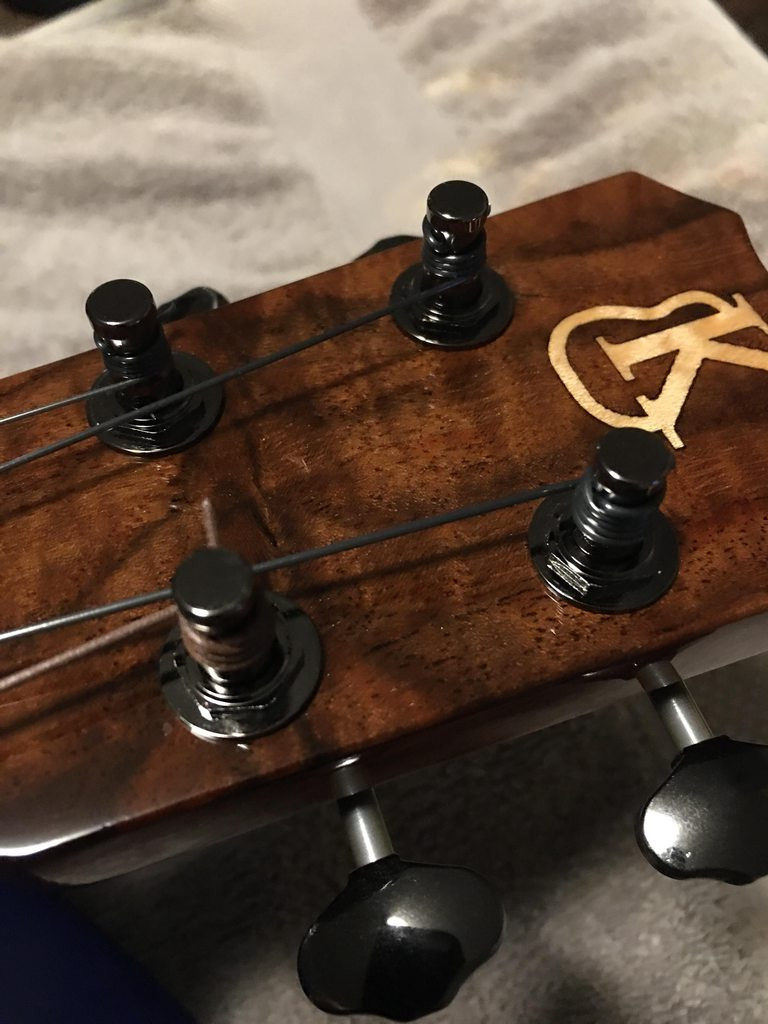As a self-confessed guitar tuning machine enthusiast, I’ve spent countless hours tweaking, testing, and obsessing over these crucial pieces of guitar hardware. If you’re diving into the world of Guitar Tuning Machines, there are a couple of key aspects that deserve your attention, and some common misconceptions that are best ignored.
What to Ignore: The Gear Ratio Myth
Many guitarists get fixated on the gear ratio of tuning machines, believing that a higher ratio automatically equates to better tuning. While a higher ratio (like 21:1 compared to 18:1) means you need to turn the key more to achieve the same pitch change, the real culprit behind tuning headaches isn’t the ratio itself, but something called “lash.”
Lash refers to the slack or free play in the tuning machine. It’s that frustrating dead zone where you turn the key, but nothing seems to happen before the tuner finally engages and adjusts the string. Cheaper tuning machines, often found on budget-friendly guitars, tend to suffer from significant lash. Brands like Ping and Wilkinson, while decent for their price point, often exhibit this looseness. Remember, with guitar hardware, you generally get what you pay for. A budget set of sealed tuners around the $45 mark will perform like $45 tuners. The difference in precision and feel between a high-end tuner like a Gotoh 510 and a generic Ping is night and day.
Focus on the Nut: The Unsung Hero of Tuning Stability
Before blaming your tuning machines for slipping or sticking, consider the condition of your guitar’s nut. A poorly cut or finished nut is a very common cause of tuning problems. If the string slots are rough or too tight, particularly for the wound strings, the strings can bind and snag as you tune. This binding often manifests as a subtle “PING” sound when tuning, and it can trick you into thinking your tuners are sloppy or have lash. In reality, the nut is preventing the string from moving smoothly, making even high-quality tuning machines seem inadequate. Ensuring your nut slots are properly filed and lubricated is a crucial step in achieving stable and accurate tuning.
My Top Pick: Gotoh 510 Sealed Tuners
When it comes to premium guitar tuning machines, I’m a massive advocate for Gotoh 510 sealed tuners. I’ve installed them on five of my guitars, and in my experience, they represent the sweet spot of performance, quality, and value. While there are “ultra-premium” tuners available that can cost a significant portion of the guitar’s total value, you quickly reach a point of diminishing returns. The incremental improvement in performance for the exponentially higher price may not be justifiable for most players.
For my guitars, I prefer the Gotoh 510 “Mini” versions with an 18:1 ratio. The full-size 510s offer a slightly finer 21:1 ratio, but I find them visually too large for the headstocks of my instruments. The mini 510s provide exceptional precision and a smooth, solid feel that inspires confidence in tuning stability.
Open Back Tuners: A Word of Caution (and an Exception)
Open back tuners offer a vintage aesthetic and are often found on classic guitars. However, I’m generally not a fan of traditional open back designs, with one notable exception. I’ve owned guitars equipped with high-end Waverly open back tuners, often considered the gold standard, and I found them surprisingly stiff and not particularly accurate.
My theory is that the traditional open back design, where the tuner is only secured to the headstock from the back with screws and the post passes through a pressed-in bushing at the front, can lead to issues. As string tension increases during tuning, the tuner post may bend slightly, causing it to bind against the bushing.
Gotoh seems to have recognized this potential flaw and developed the SXN510 and SXN510V open back tuners to address it. These innovative tuners feature threaded bushings, similar to sealed tuners, that screw into the tuner body. This design effectively clamps the tuner to the headstock from both the front and back, significantly improving stability and feel. I have a set of SXN510 open backs on my Kanilea ukulele, and they are truly remarkable. They offer the smooth, precise feel of sealed Gotoh 510s, something I’ve never experienced with other open back tuners.
 Close-up of Gotoh SXN510 open back tuners on a ukulele headstock
Close-up of Gotoh SXN510 open back tuners on a ukulele headstock
The only downside of the Gotoh SXN510 is that they are not a direct drop-in replacement for standard open back tuners. The headstock post holes need to be enlarged to accommodate the larger threaded bushings. However, for the improvement in performance, this modification can be well worth the effort.
Ultimately, choosing the right guitar tuning machines involves understanding what truly impacts tuning stability and accuracy. While gear ratio might seem important on paper, factors like lash, nut quality, and tuner design play a far more significant role in your guitar’s tuning performance. And remember, these are just my opinions, based on my experience as a dedicated “tuning machine geek” – your mileage may vary!
